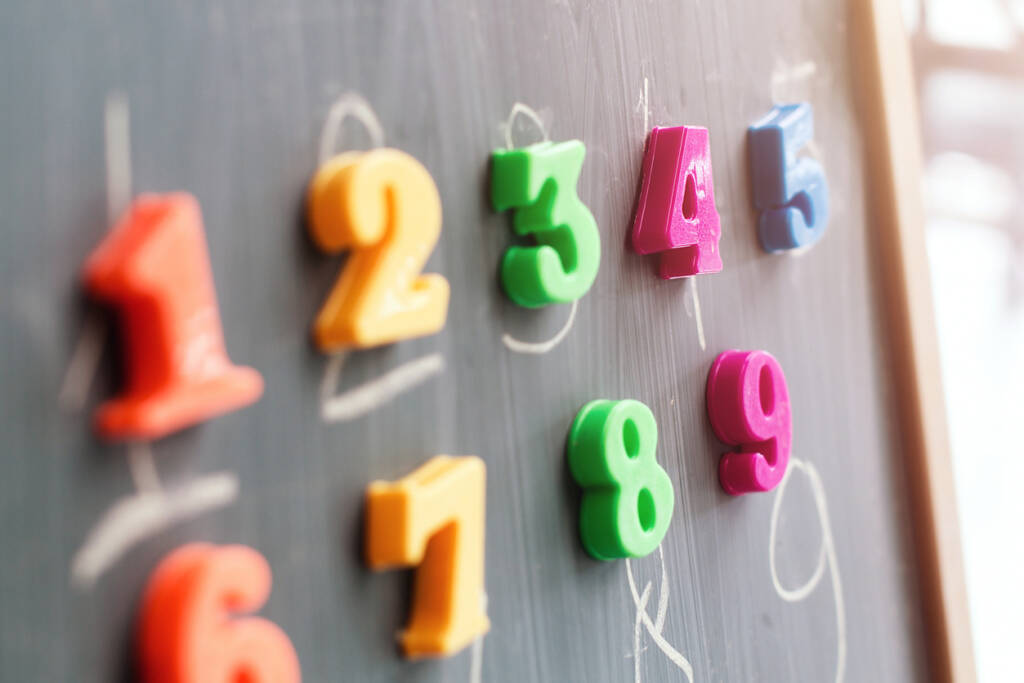
Elementary Math Grade 4

In Math Grade 4, students will multiply and divide multi-digit whole numbers using different strategies and a standard algorithm. The course provides the opportunity for students to see the relationship between fractions and decimals and introduces addition and subtraction of each. Using a protractor to draw and measure angles is another focus of the course. Other engaging activities include learning about measurement and using median, mode, and range as ways to interpret data.
Please view the Elementary Parents Guide for Grades 3-5 with guidance on helping your student transition to online learning and thrive at VLACS.
Major Topics and Concepts
Course Materials
To achieve success, students are expected to submit work in each course weekly. Students can learn at their own pace; however, “any pace” still means that students must make progress in the course every week. To measure learning, students complete self-checks, practice lessons, multiple choice questions, projects, discussion-based assessments, and discussions. Students and families are expected to maintain regular contact with teachers because, when teachers, students, and parents work together, students are successful.
Required Materials – Please view the list of materials before registering.
Competencies
Algebraic Thinking
I can explain whether a whole number from 0 to 144 is prime, composite, or neither. I can describe number patterns following a given rule to solve word problems. I can explain whether an equation is true or false using different strategies. I can solve multiplication word problems using models. I can solve division word problems using models. I can solve real-world mathematical problems involving area and perimeter with a formula. I can solve perimeter and area equations of rectangles.
Data and Whole Numbers
I can calculate the median, mode, and range in a given data-set visual. I can solve real world questions about a data set shown in a given data-set visual. I can explain the representation of whole-number data using a given data-set visual.
Dividing by One-Digit Divisor
I can solve division equations with a dividend up to four digits using equal groups. I can solve multi-digit division equations with a divisor that is one digit or a multiple of 10. I can solve multi-digit whole number equations with a one digit divisor using the distributive property. I can solve multi-digit whole number division equations with a single number divisor by using partial quotients. I can solve multi-digit whole number division equations with a single number divisor by using long division. I can solve one and two-step division word problems.
Multi-Digit Multiplication
I can solve multiplication equations of a multi-digit number and a two-digit multiple of 10 or 100. I can estimate the product of two multi-digit factors by rounding. I can estimate the product of two multi-digit factors by using compatible numbers. I can solve equations using the area model to decompose and multiply a multi-digit whole number and a one-digit whole number. I solve multiplication equations using partial products to multiply two multi-digit whole numbers. I can solve two-step word problems with multi-digit factors. I can solve multiplication equations using a standard algorithm to multiply two multi-digit whole numbers.
Multiples and Factors
I can solve multiplication problems with products within 144 using arrays or number lines. I can solve multiplication problems with products within 144 by decomposing numbers. I can solve multiplication equations using the distributive property. I can solve multiplication equations with whole numbers and multiples of 10, 100 or 1000. I can solve division equations using multiplication facts. I can identify factors that were multiplied to equal a given number.
One-Digit Multiplication
I can estimate the product of an equation by rounding the multi-digit factor. I can estimate solutions to real-world problems involving multiplication of a one digit factor. I can solve multiplication equations using distributive property models. I can solve multiplication equations involving a multi-digit whole number and one-digit whole number using partial products. I can estimate the product of equations involving multi-digit whole and one-digit whole numbers. I can solve multiplication equations involving a multi-digit whole number and a one digit whole number using a standard algorithm.
Place Value Understanding
I can explain the changes in the value of a digit in a whole number when moved one place to the left or right. I can write whole numbers up to 1,000,000 in different forms. I can compare multi-digit whole numbers up to 1,000,000 using the <, >, or = symbols. I can describe the rounding of whole numbers to the nearest, 10, 100, or 1,000. I can solve multi-digit whole number addition equations from a word problem. I can solve multi-digit whole number subtraction equations from a word problem.
Data with Fractions and Decimals
I can describe the representation of fractional data using data-set visual representations. I can calculate the median, mode, and range of fractional data or decimals in a data-set visual. I can compare two data sets with values that are fractions or mixed numbers. I can describe the representation of decimal data using different visuals for data sets.
Decimal Numbers
I can model decimals greater than 1 in a model or number line. I can model fractions greater than 1 with 10 and 100 in the denominator. I can write decimals greater than 1 through hundredths. I can solve addition or subtraction equations involving decimals I can solve word problems involving money with dollars and cents.
Equivalent Fractions and Mixed Numbers
I can model a mixed number as a fraction greater than 1. I can identify equivalent fractions in a given form. I can create equivalent fractions using a given form. I can describe the numerator and denominator changes when an equivalent fraction is created. I can compare fractions and mixed numbers with different denominators using benchmark fractions. I can compare fraction comparisons using the symbols <, >, or =.
Measurement with Customary Units
I can select a strategy to find the length of an object that is not lined up with 0 on a measuring tool. I can solve one and two-step real-world problems involving length or distance. I can solve multiplication equations involving volume measurements. I can solve multiplication equations involving weight measurements. I can solve fractional intervals of time equations using a given model.
Measurement with Metric Units
I can solve one-step real world equations of length involving metric distance. I can solve two-step real-world multiplication or division equations involving metric distance. I can solve one and two-step real world problems involving metric volume. I can solve one and two-step real-world equations involving metric mass. I can describe the measure of temperature in Celsius or Fahrenheit using an analog thermometer.
Measuring Angles
I can draw points, lines, line segments, rays, or angles. I can model understanding of angle formation from two rays sharing a common endpoint. I can describe the process to measure angles in whole number degrees using a protractor. I can identify acute, right, obtuse, straight, or reflex angles based on angle measures. I can solve for unknown angles by adding or subtracting angle measurements. I can draw angles with given measurements using a protractor.
Working with Fractions and Mixed Numbers
I can describe the process to decompose a fraction and mixed number into a sum of fractions with the same denominator in different ways. I can solve real-world fraction equations of mixed numbers using models. I can solve real-world fraction equations of mixed numbers using a number line. I can solve fraction equations of mixed numbers with like denominators using a standard algorithm for addition. I can solve fraction equations of mixed numbers with like denominators using a standard algorithm for subtraction. I can solve multiplication equations with a fraction and a whole number using different strategies.

